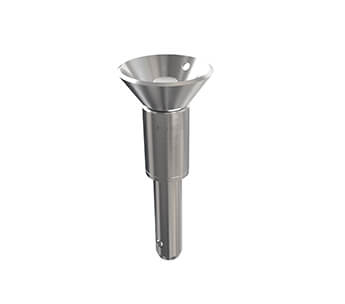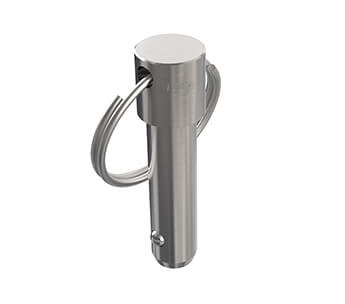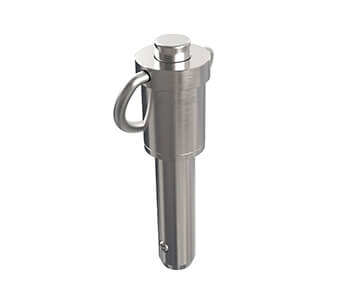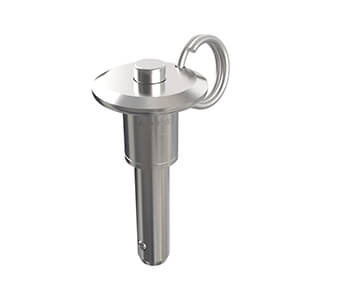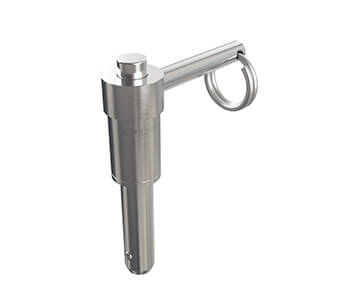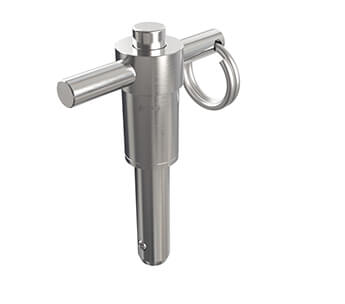Quick Release Pin
High-quality stainless steel provides extra protection against corrosion and oxidation
Rapid, easy positive engagement and robust holding strength
Well-suited for applications that involve frequent and repetitive use
What are Quick Release Pins?
Quick Release Pins, also known as ball lock pins, locking pins, or safety pins, serve various purposes including fixing, locking, connecting, adjusting, and facilitating quick positional changes.
These pins offer a reliable and secure locking function when used with the receiver plate. This mechanism ensures ease of use and enables rapid part changeover and replacement as needed.
Quick release pins exhibit exceptional resistance to shearing, corrosion, and wear. As a result, they are commonly employed in applications that involve frequent, rapid, and manual assembly and disassembly of products.
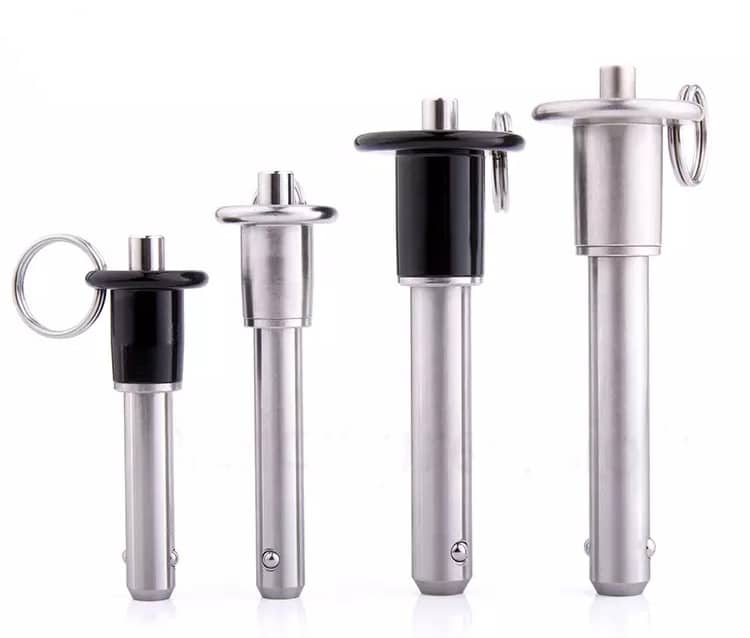
How Does a Quick Release Pin Work?
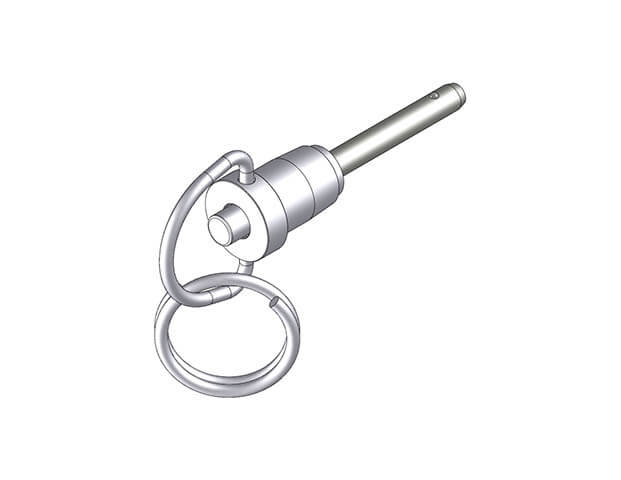
The functionality of quick release pins presents a simple and efficient method for securing and releasing machinery parts. Once inserted, these pins effectively maintain the respective part in position. On the other hand, to release the part, one can simply remove the quick release pin.
Upon installation, a spring-loaded ball extends out from the pin shaft into a hole or detent, effectively locking the pin in place.
Disengaging the pin requires the user to depress a button on top of the handle. This action relieves the spring pressure that secures the pin in place, facilitating its removal.
In contrast, quick release pins lacking a button mechanism can be extracted by a simple pulling motion.
Quick and Secure Fastening Solutions
Our quick-release pins deliver rapid, simple positive engagement and exceptional holding strength, catering to applications necessitating frequent, repetitive usage. Additionally, we offer heavy duty and marine styles to accommodate diverse needs.
Explore our custom CNC machining services and surface finishing to craft precise products tailored to meet your unique application demands.
Request an instant quote to learn more about our Quick Release Pins machining capabilities.
Quick Release Pin FAQs
Known as ball lock pins, locking pins, or safety pins, quick release pins provide a simple and effective means of securing and releasing machinery components, particularly for rapid manual assembly and disassembly.
Quick release pins typically feature a pin and a handle, and they are available in various styles and materials. They are primarily categorized into push-pull pins and positive-locking pins.
A notable advantage of quick release pins is their single-handed removal, requiring no tools for extraction.
Quick release pins are primarily used in applications demanding speedy, regular, and hands-on assembly and disassembly of items. Upon installation, a spring-loaded ball extends from the pin shaft into a hole or detent, effectively securing the pin in place.
Different quick release pins are crafted from different materials. Typically, quick release pins are constructed from stainless steel due to their superior strength, durability, and resistance to corrosion compared to materials like aluminum. These pins are also available in various finishes, which serve to keep the metal from damage.
There are two main categories of ball lock pins - single acting and double acting pins.
Single acting ball lock pins are operated using buttons and handles, whereas double acting pins are activated by pulling or pushing action.
Double acting ball lock pins remain securely locked until the central spindle attached to the pin body handle is pushed or pulled to release them. Pulling on the handle releases the balls, thus facilitating the removal of the pin in a single motion.
The size of a quick release pin can differ, so it's important to consider the diameter and width of the handle, as well as the length of the pin.
Here's an example of a quick release pin commonly found in the market:
Stainless Steel Kwik Lok Pin W/ Button Handle, 3/16” OD, ½” L :
It features a round head with a button and is suitable for applications with limited space. These stainless steel pins are commonly used in various locking-pin applications that require corrosion resistance.
When choosing quick release pins, it's crucial to take into account the handle type, which may include T-shaped or ring handles, and some featuring a button mechanism.
The sizes of quick release pins can vary greatly, so it's important to consider the diameter, width, and overall length of the handle.
Quick-release pins are frequently made from a variety of materials, with stainless steel being a popular option due to its superior strength, durability, and corrosion resistance when compared to materials like aluminum.
Heavy-duty quick release pins are often offered in different finishes, which protect against potential metal damage.
Ball lock pins, also known as quick release pins, safety pins, or locking pins, are self-locking pins that feature a press button for tool-free unlocking. They find applications in various industries for tasks like fixing, locking, connecting, adjusting, or swiftly changing positions.
These pins exhibit exceptional resistance to shear and corrosion, and they are effectively safeguarded against wear and tear.
Ball Lock Pins function as alignment pins that facilitate the connection and securing of machine components and workpieces via a button mechanism.
These precision alignment pins possess a ground shank that expands into a receiver bushing or plate, incorporating a reliable positive locking mechanism. Upon activation, spring mechanisms retract the balls inside the pin shaft. Subsequently, the spring-loaded ball lock is reactivated when the push button is released, causing the balls to retract.
The inclusion of a quick release mechanism in ball lock pins ensures a stable and secure locking function with the receiver plate. This feature simplifies the use of ball lock pins and facilitates quick part changeover and replacement when necessary.
Ball Lock Pins are commonly used in industries such as automation, robotics, electronics production, and machine manufacturing.

